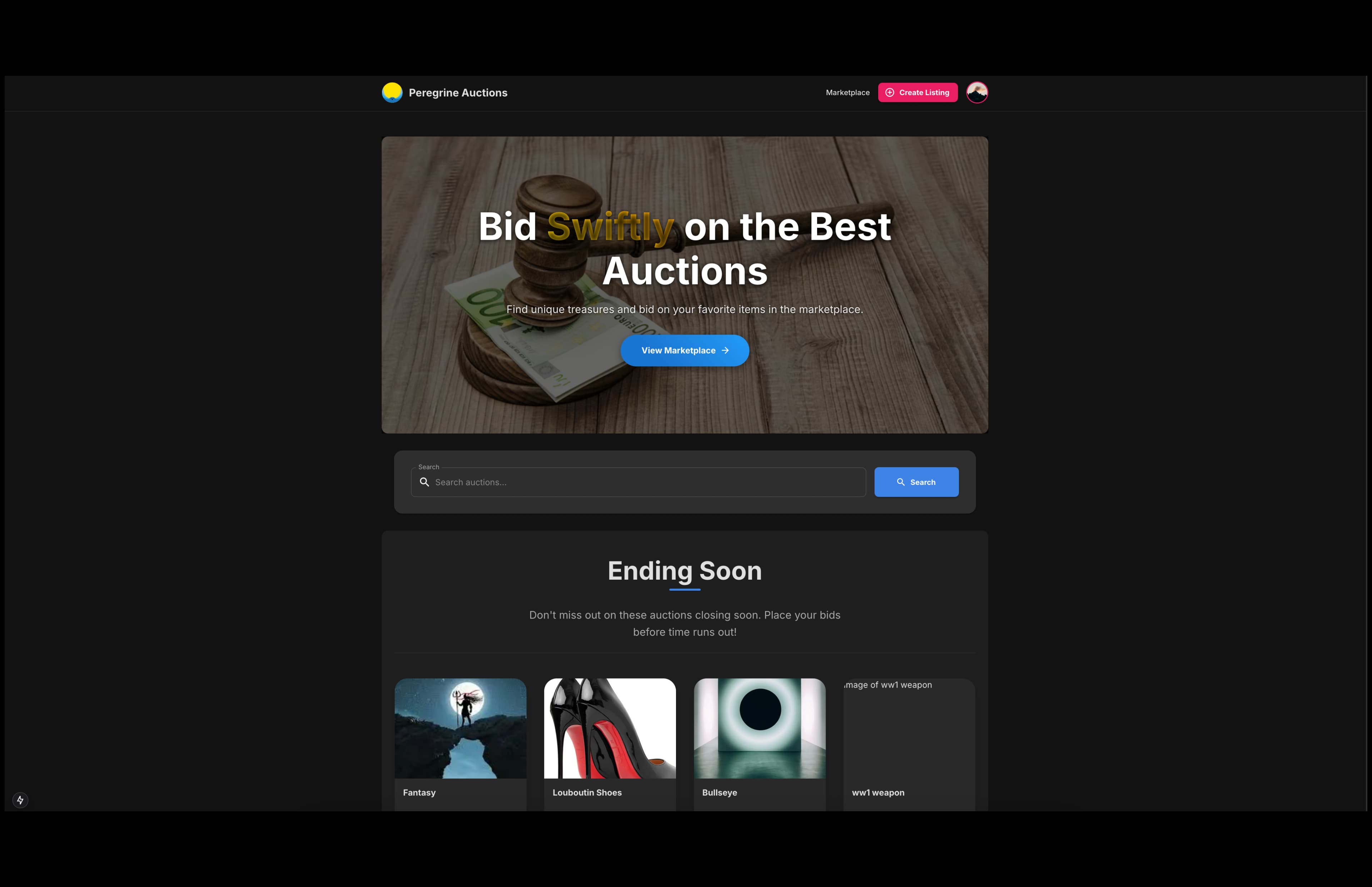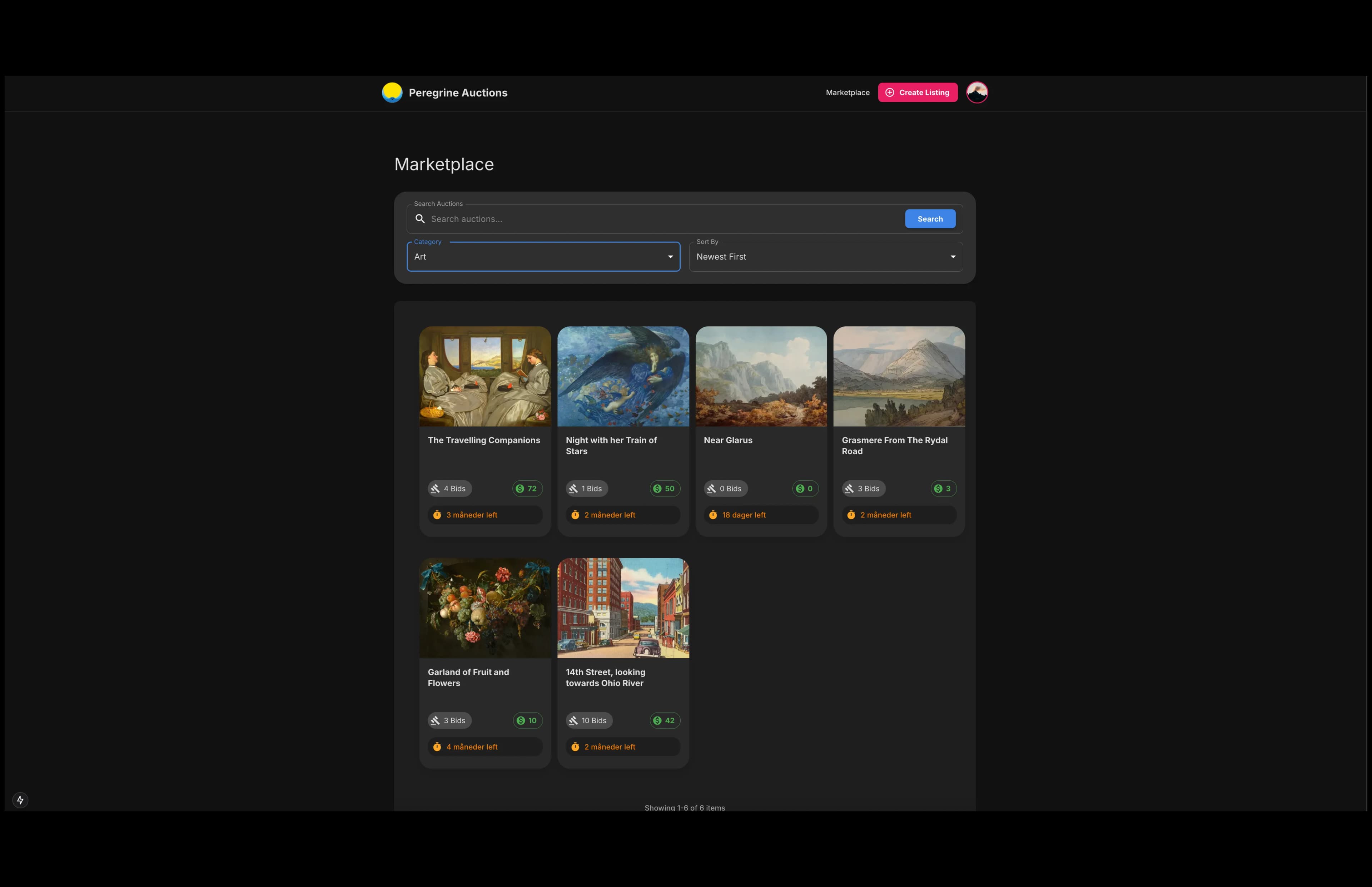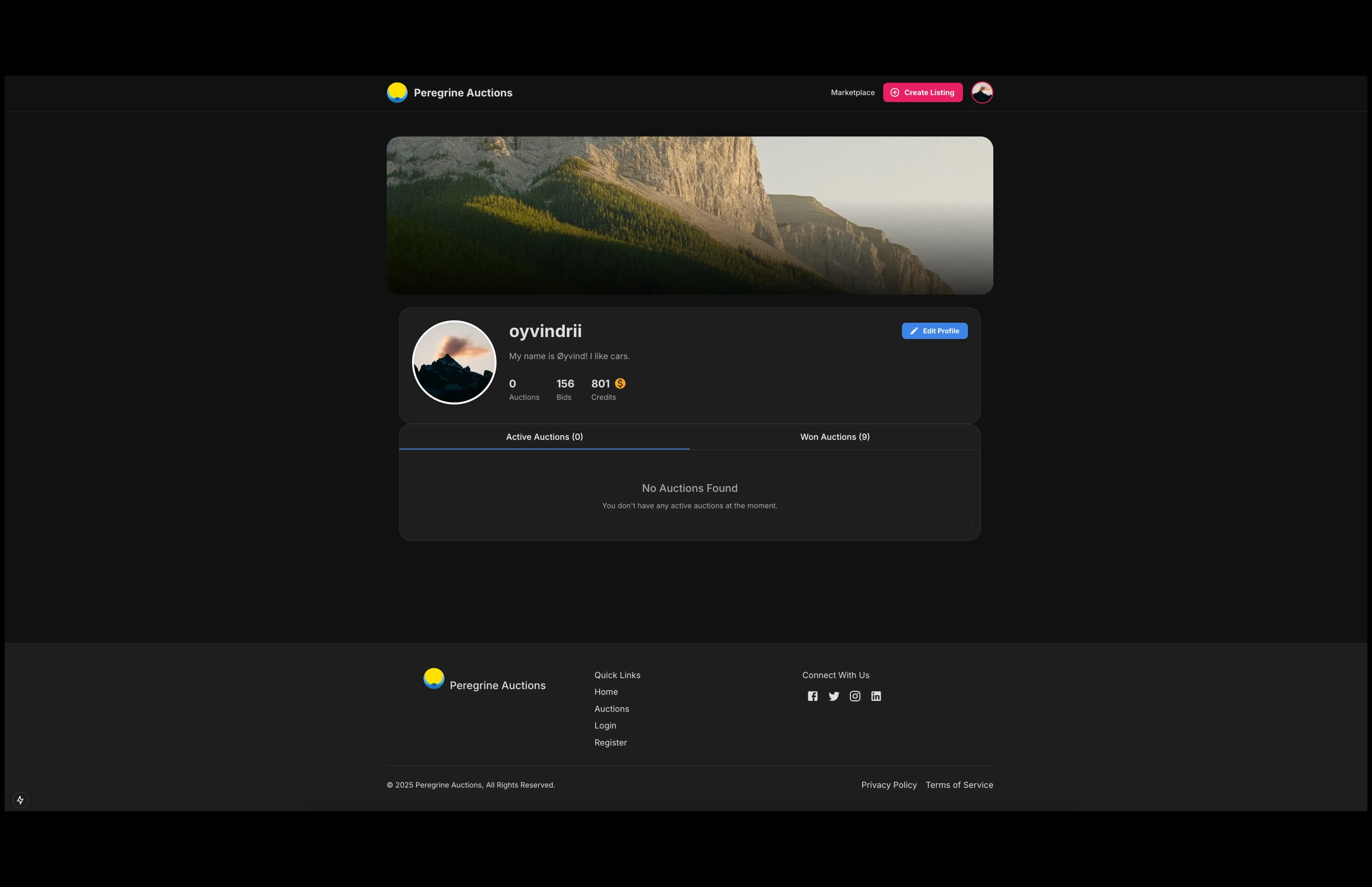Peregrine Auctions
Peregrine Auctions is a dynamic online auction platform built with a modern, full-stack tech stack. It provides users with a seamless and engaging experience for bidding on a wide variety of items. The platform features real-time updates, secure authentication, and a responsive design that ensures a great user experience across all devices.
This project was developed using Next.js for server-side rendering and static site generation, ensuring optimal performance and SEO. The front end is built with React and Material-UI (MUI) for a clean, modern, and accessible user interface. TypeScript is used throughout the project for static type checking, improving code quality and maintainability. The backend is powered by a custom API, with endpoints for user authentication, creating and managing listings, and placing bids.
Reflections and Improvements
This project was a great opportunity to build a full-stack application from the ground up, and while I'm proud of the result, there are several areas where I could have improved the implementation:
-
Improved State Management: While the current implementation uses React's built-in state management, a more complex application could benefit from a dedicated state management library like Redux or Zustand. This would help to centralize and streamline state management, especially for features like real-time bidding and user authentication.
-
Enhanced API Error Handling: The API error handling could be more robust. While there is some basic error handling in place, a more comprehensive approach would involve creating a centralized error handling utility to provide more specific and user-friendly error messages. This would improve the user experience and make debugging easier.
-
More Comprehensive Testing: While the project includes some basic testing, it would benefit from a more thorough testing suite. This would include more extensive unit tests for individual components and utility functions, as well as end-to-end tests to simulate user flows and catch potential bugs before they reach production.
-
Refined Component Structure: Some of the React components could be broken down into smaller, more reusable components. This would improve code readability and maintainability, and make it easier to add new features in the future. For example, the AuctionDetails component could be broken down into smaller components for the image gallery, seller information, and item description.
-
Code Refactoring and DRY Principles: There are some instances of code duplication that could be refactored to follow the "Don't Repeat Yourself" (DRY) principle. For example, the fetch logic in the EndingSoonSection and marketplace pages could be consolidated into a single, reusable function.
-
Accessibility Improvements: While the project uses semantic HTML and ARIA attributes, there is always room for improvement in accessibility. A more thorough accessibility audit could be conducted to identify and address any potential issues, ensuring that the platform is usable by as many people as possible.
Overall, this project was a valuable learning experience, and I'm confident that the lessons I've learned will help me to build even better applications in the future.


